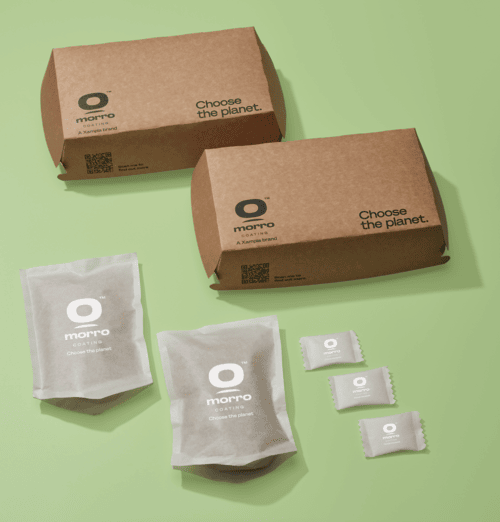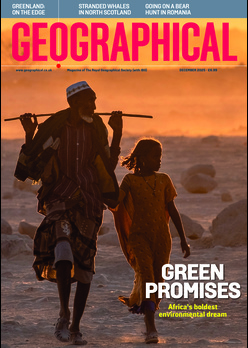
Principal scientist at Xampla Lynette Holland speaks to Victoria Heath about the revolutionary new technology turning plants into plastic
Think of an egg. When it’s cracked into a pan, the transparent, jelly-like white is flimsy – unappealing to eat. There’s not a whole lot you can do with it.
But up the heat, and that same egg takes on a more solid appearance, becoming a mightily useful accompaniment to a fry-up. It’s this process – of transforming a previously unusable item into something worthwhile – that principal scientist at Xampla, Lynette Holland, uses as an analogy for the work the company does in transforming waste plant material into a plastic-like substitute.
The new natural plant polymer materials offer a new way of approaching the world of packaging. In contrast to traditional plastics, it can break down in a matter of weeks or months. Such materials can be used in a wide range of applications, including paper coatings, films and microcapsules used in detergents and personal care products.
Enjoying this article? Check out our related reads:
- Study finds microplastics in human testicles
- USA supports Global Plastics Treaty to reduce consumption
- The dirty truth about acrylic and microplastics
- Plastic treaty talks fail to reach agreement in Geneva
- More than 4,200 chemicals of concern found in plastic, new study finds
‘Traditional plastics made from fossil fuels are so over-engineered,’ says Holland. ‘They’re made to last thousands of years.’ Yet, most plastic is single-use – think takeaway boxes, coffee lids, delivery bags – and binned within hours. Eventually, such waste will break down into microplastics – small pieces less than five millimetres long – that pose a real risk to oceans and aquatic life.
‘There are very few applications – for example medical devices or implants – where plastic needs to last for a long time,’ she continues. And it’s true: up to 50 per cent of all plastic produced is single-use.
‘It’s been about convenience, and also laziness on our part as consumers because plastic is so easy to produce and so cheap. In reality, it takes just a little bit of thought to figure out that isn’t necessary.’

Any plant material can be used and converted into the plastic-like substitute, but the process tends to utilise any waste materials from food production.
Traditional plastic can creep insidiously into seemingly environmentally-friendly products – for example, cardboard takeaway boxes for fast food. In reality, these boxes contain a thin plastic coating on the inside to add stability and to ensure they don’t collapse when food is added into them. Replacing this plastic with the plant substitute ensures items can fully biodegrade, rather than break down into harmful microplastics.
This process is exactly what the company did in their partnership with Just Eat’s German division Lieferando, transforming hundreds of thousands of takeaway boxes into planet-friendly versions lined with a sustainable plastic-free and biodegradable coating made from plants.
As well as this, British meal kit retailer Gousto, took the plastic substitute on board. Previously, the company used traditional, fossil-fuel derived plastic to package stock cubes – a process producing vast swathes of waste.
However, using the plast-based alternative, a plastic-like film – which retains all the properties of the original packaging – was created, with one key difference: it’s edible. So, when a consumer wants to use a stock cube, the entire product can be put within the meal. As heat is applied to the packaging, it degrades.
‘There’s zero packaging involved at the end, because you eat and digest it,’ Holland explains.
Behind these success stories, however, is serious scientific graft. A significant proportion of research is conducted in laboratories, working at a test-tube size to try new ways of handling materials, as well as innovative combinations to produce plastic-like films. As well as this, there is the much larger scale task of taking films to manufacturers who can produce them in vast quantities.

In the world of plastics, the recent collapsing of talks in Geneva over the plastic treaty has been a sore topic for many advocating for a better, more sustainable management of plastic. For Holland, the key to success in the treaty lies in legislation at a country level.
‘Even if countries agree a certain reduction in plastic production, that’s got to translate into reality on the ground. For example, what are manufacturers going to have to do differently?’
‘That’s why it’s so important that Individual countries forge their own paths, and have legislation at a local level. From my point of view, what’s really crucial is legislation that helps manufacturers to make the right choice.’
In the UK and Europe, good headway is already being made to swap out fossil-fuel derived plastics for plant material counterparts. Part of the reason is incentives, such as financial rewards, for making the switch. Another major plus point for businesses looking at a plant alternative is that it can be made using their existing equipment in factories.
However, in other countries, uptake of plant-based plastic alternatives is still relatively slim. In this case, global treaties may be a better solution to increase uptake around the globe, as well as encouraging existing users of plastic to convert their existing equipment manufacturing plastic materials into plant.
‘Then,’ Holland says, ‘you can make a really big impact around the world.’




